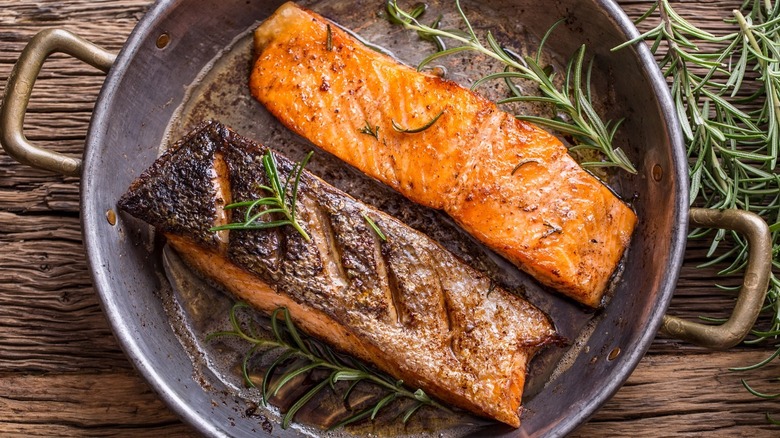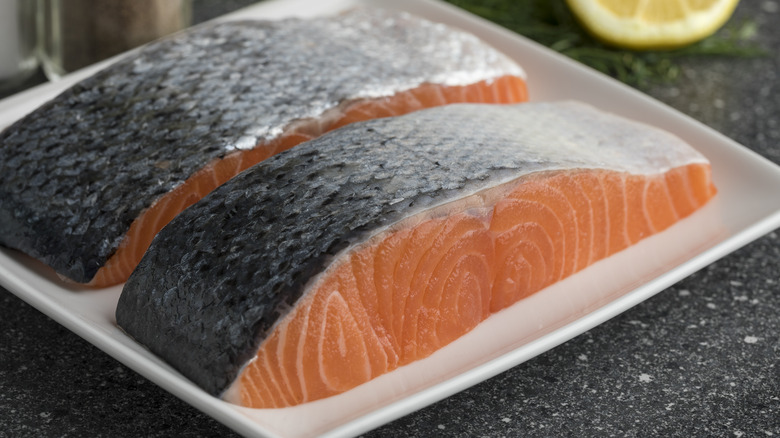Is Salmon Skin Safe To Eat And Should You Be Eating It?
Salmon is one of the most nutritious fish you can eat because it is a rich source of omega-3 fatty acids and proteins, vitamins, and minerals that improve the skin, heart, brain, and other parts of the body. Interestingly, salmon skin contains the highest concentration of omega-3 fatty acids. So, can salmon be eaten with the skin on to get its nutritional benefits? Absolutely! But is salmon skin safe to eat? Well, yes, but Healthline advises being cautious about individual health concerns and where the salmon was sourced. It adds that most of the world's salmon supply contains toxins, which is why salmon and salmon skin should be consumed sparingly.
Although farmed salmon is cheaper than wild salmon from the open ocean, they have relatively higher levels of harmful chemicals called polychlorinated biphenyls (PCBs) and other environmental toxins in their skin and its underlying layer of fat according to a study by Indiana University. The Alaskan Salmon Company warns that PCBs are carcinogens and negatively impact the immune, nervous, and endocrine systems. For the best salmon skin, it recommends choosing fish that don't look and smell unpleasant, and have a dark pink color instead of grey or brown patches.
Benefits of salmon skin and how to cook it
Eating salmon skin helps to protect the heart, brain, eyes, and skin, as per Medical News Today. A study on the anti-diabetic properties of marine organisms confirmed that it helps to treat diabetic wounds and type 2 diabetes. Another study by Korean researchers also proved that the omega-3 fatty acids in salmon skin have anti-cancer properties. Seems like it would be a shame to strip your salmon before you eat it, right?
Salmon can be cooked with the skin on in a variety of ways, and you can even cook the skin separately. Healthline mentions that crispy fried salmon skin looks like fried bacon, but is a healthier alternative to it. Before you cook your salmon with the skin on or just the skin, make sure it is properly scaled, cleaned, and rinsed before patting it dry with a paper towel. Remember not to make the mistake of cooking salmon skin side up first because doing the opposite will help it cook evenly and prevent it from getting overcooked. This tip will help you make the most of the nutritional benefits and delicious taste of your salmon skin, as well as add a wonderful crunch to it as well.

